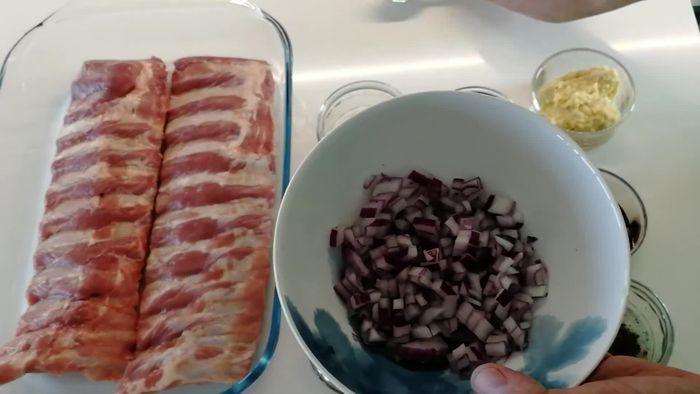Vietnamese braised pork ribs, or sườn sáo, are a culinary masterpiece, a symphony of savory, sweet, and umami flavors that will transport you straight to the heart of Vietnam. This deeply satisfying dish showcases the magic of slow cooking, transforming humble pork ribs into tender, melt-in-your-mouth perfection. The rich, dark braising liquid, infused with aromatic spices like star anise, cinnamon, and cloves, creates a sauce so delectable, you'll want to soak up every last drop with steamed rice. The balance of sweet and savory is expertly achieved, creating a dish that's both comforting and sophisticated.
Beyond the incredible taste, sườn sáo is surprisingly simple to make. While it requires some patience for the slow braising process, the hands-on time is minimal, making it a perfect dish for a weekend meal. Ready to experience the magic of Vietnamese braising? Let's dive into the detailed, step-by-step process that will guide you towards creating your own unforgettable bowl of Vietnamese braised pork ribs.
Tools Needed
- Oven
- Baking dish
- Saucepan
- Foil
Ingredients
- Baby back ribs
- Shallots or red onion
- Soy sauce
- Vietnamese fish sauce
- Brown sugar
- Five spice powder
- Ginger and garlic paste
- Lemongrass
- Chili paste or sambal oelek
- Water: 2 cups
Step-by-Step Instructions
Step 1. Marinate the Pork Ribs
- Combine shallots/red onion, soy sauce, fish sauce, brown sugar, five-spice powder, ginger-garlic paste, lemongrass paste, and chili paste in a bowl. Mix well.
- Massage the marinade thoroughly into the ribs, ensuring every surface is coated. Place the ribs in a baking dish, cover with foil, and refrigerate for at least two hours (overnight is recommended).


Step 2. Bake the Pork Ribs
- Preheat oven to 220°C (450°F).
- Add 2 cups of water to the baking dish with the ribs.
- Bake for 30 minutes at 220°C (450°F).
- Reduce the oven temperature to 175°C (350°F) and bake for another hour.




Step 3. Brown and Rest the Ribs
- Remove the ribs from the oven, flip them, and brush off any loose bits. Return to the oven uncovered for 20-25 minutes at 175°C (350°F) to brown.
- Remove ribs from the oven and let them rest, covered in foil, to keep warm. Transfer pan juices to a saucepan and simmer on medium-high heat until reduced to a thick, syrupy consistency.


Step 4. Glaze and Serve
- Coat the ribs with the reduced sauce and serve.

Read more: Vietnamese Caramelized Braised Salmon: Easy Family Recipe
Tips
- Allow the marinated ribs to come to room temperature before baking for even cooking.
- Skim off excess fat from the pan juices before reducing to prevent a greasy sauce.
Nutrition
- Calories: 600-700
- Fat: 40-50gg
- Carbs: 20-30gg
- Protein: 40-50gg
FAQs
1. Can I use other cuts of pork instead of ribs?
Yes, you can use pork shoulder or even pork belly, but the cooking time may need adjustment. Ribs are ideal because they become incredibly tender during the braising process.
2. How can I make the braising liquid thicker?
Reduce the braising liquid on the stovetop after the pork is cooked, simmering it uncovered until it reaches your desired consistency. You can also mix in a cornstarch slurry (cornstarch mixed with cold water) at the end.
3. What can I serve with Vietnamese braised pork ribs?
Steamed rice is the classic accompaniment. You can also serve it with steamed buns, fresh vegetables, or noodles for a complete meal.
With its rich flavors and tender texture, Vietnamese braised pork ribs are a dish to be savored and shared. This recipe is a testament to the beauty of simple ingredients transformed through time and care. Enjoy the fruits of your labor – a truly unforgettable culinary experience awaits!
